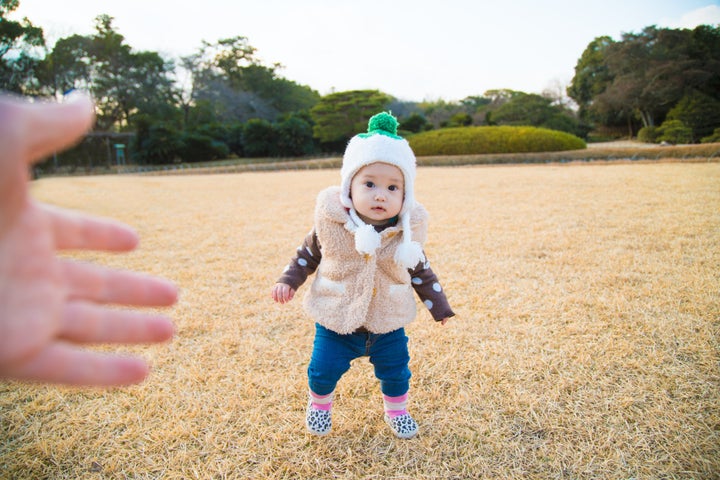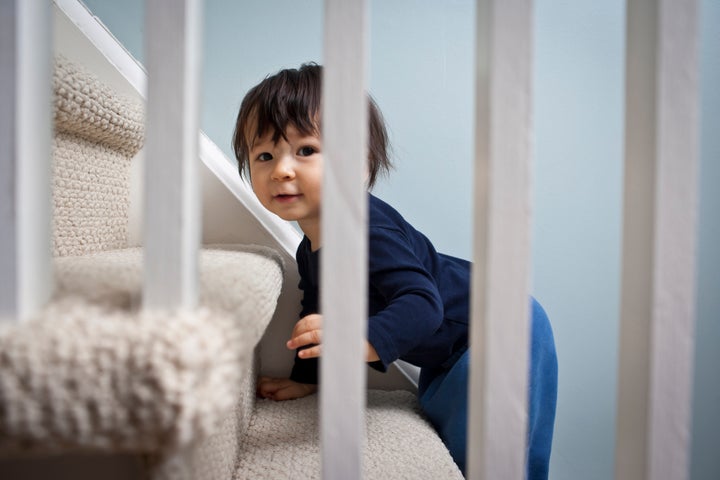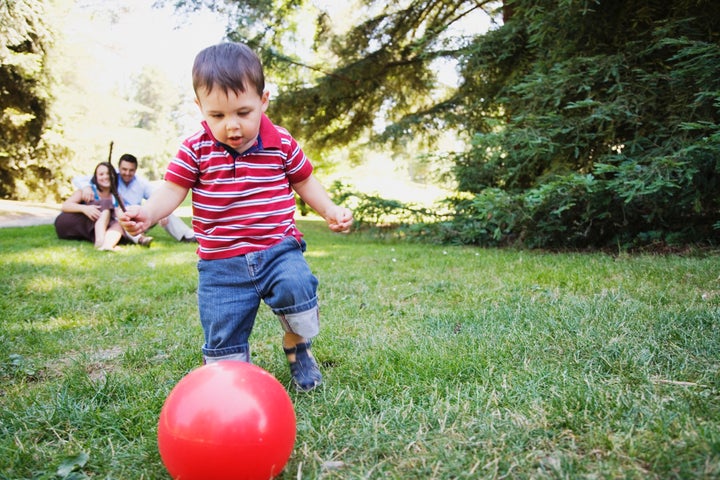
Toddlers learn to walk at their own pace. Whether your child starts taking their first steps before their first birthday or is happy to crawl until they are 18 months or more, you can bet they’ll get there in the end - and a whole new chapter in your child’s life opens up.
As your child becomes more confident standing, they will start cruising, moving around, using the furniture and your outstretched finger as props. Space your furniture at easy-to-reach distances to encourage increasingly ambitious cruising. You can also place enticing toys ahead to keep their interest, piquing their ambition to venture further and for longer.
With growing confidence, your child will feel ready to let go of furniture and may be able to take small steps when you hold their hands, kneeling in front of them or walking bent over. To encourage their first steps alone, hold your arms out for a big welcoming hug a few steps away from their standing position.

Their first steps towards you may well be with arms out and feet wide apart, toes turned in or out or on tiptoes - they are still learning to balance. Your toddler also has to learn how bend their knees back down again to sit, or reach down to a toy - not as easy as you might think, so be prepared for some bottom flops. Tempting though it might be to rush in, let your child right themselves.
Your toddler will walk more easily indoors barefoot, as their feet can grip the floor surface, and they can perfect their coordination and balance. Make sure their first pair of shoes is fitted by a qualified shoe fitter, who will ensure their shoes provide cushioning support, protection and space to grow. Your toddler’s shoe size will change at a rapid rate - up to two sizes a year - so check that their shoes continue to fit properly.
Advertorial video brought to you by Aptamil Follow On and Growing Up milks.
Teach your toddler how to climb stairs, but never let them go up and down on their own. Descending backwards or ‘bottoms first’ is one of the safest ways to teach your child to go down the stairs, as it will take a while for them to be able to take alternate steps, rather than one at a time.
Don’t use baby walkers; they’re potentially dangerous and may actually hinder your child from walking as their feet won’t be supporting their body. But push-along toys can play a big part in increasing your child’s confidence in walking - just make sure surfaces are flat and you’re always there to supervise.
Make sure you’ve toddler-proofed your home. Now your toddler can walk, they have the potential to reach new heights - kitchen counters, cookers and intriguing appliance knobs - so stay attentive to their safety.

Practice makes perfect so it’s good to give your toddler time to practise and walk with you, even if it may slow you down, rather than always using the buggy. Children who can walk on their own should be physically active every day for at least three hours. This should be spread throughout the day, indoors or outdoors, and can include lighter activities like standing up, moving around, rolling and playing, as well as more energetic activities like skipping, hopping, running and jumping.
Aptamil Growing Up milks are tailored to your toddler’s stage of development. As your toddler begins to discover new foods, Aptamil Growing Up milks contain specific nutrients tailored to support their growth and development, as part of a varied, balanced diet.
Aptamil Growing Up milks contain:
- Iron to support normal cognitive development
- Vitamin D and calcium for normal bone development
- Iodine which contributes to the normal growth of children
Learn more about Aptamil Growing Up milks at Aptaclub.co.uk.
Advertorial brought to you by Aptamil Growing Up milks.